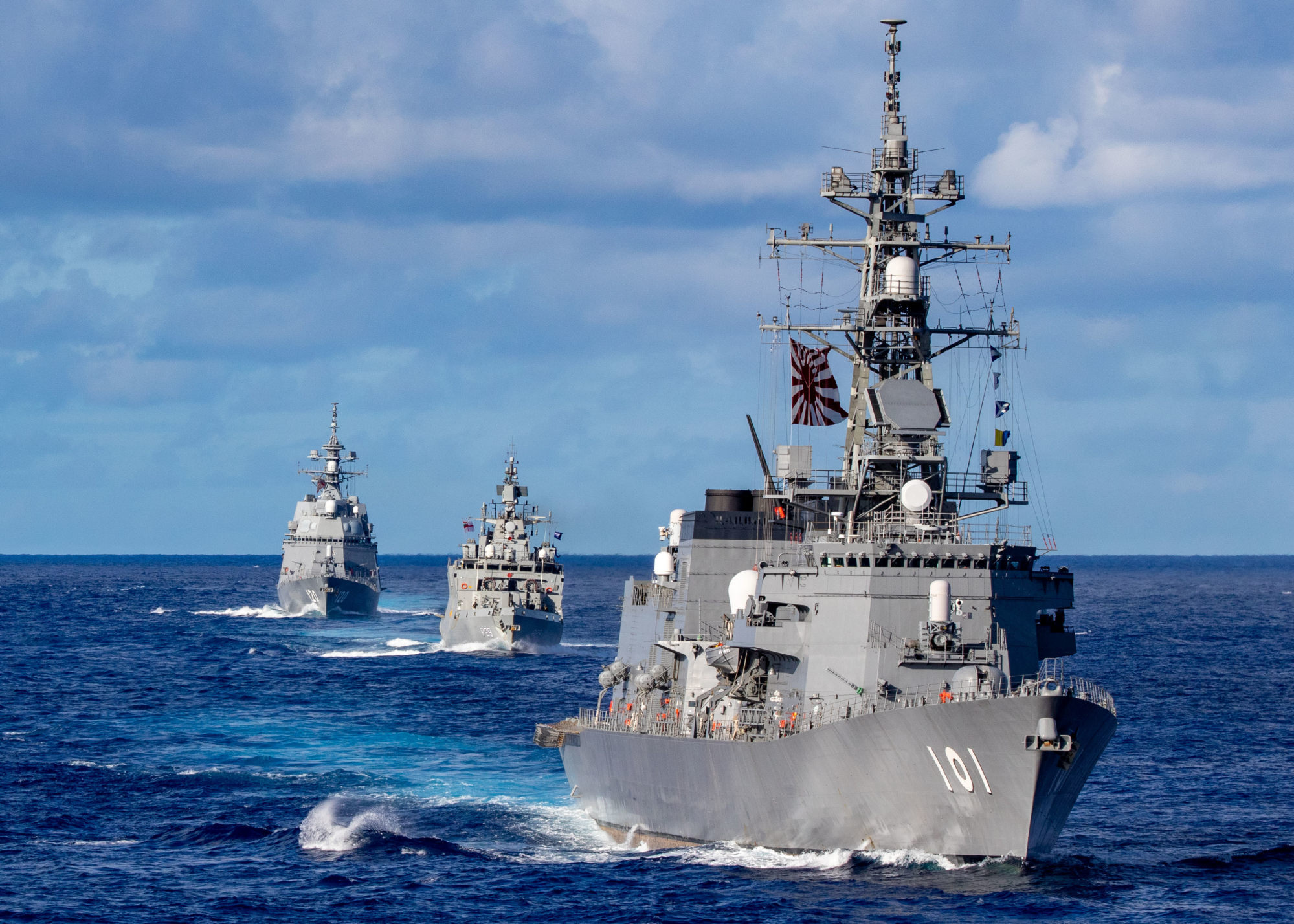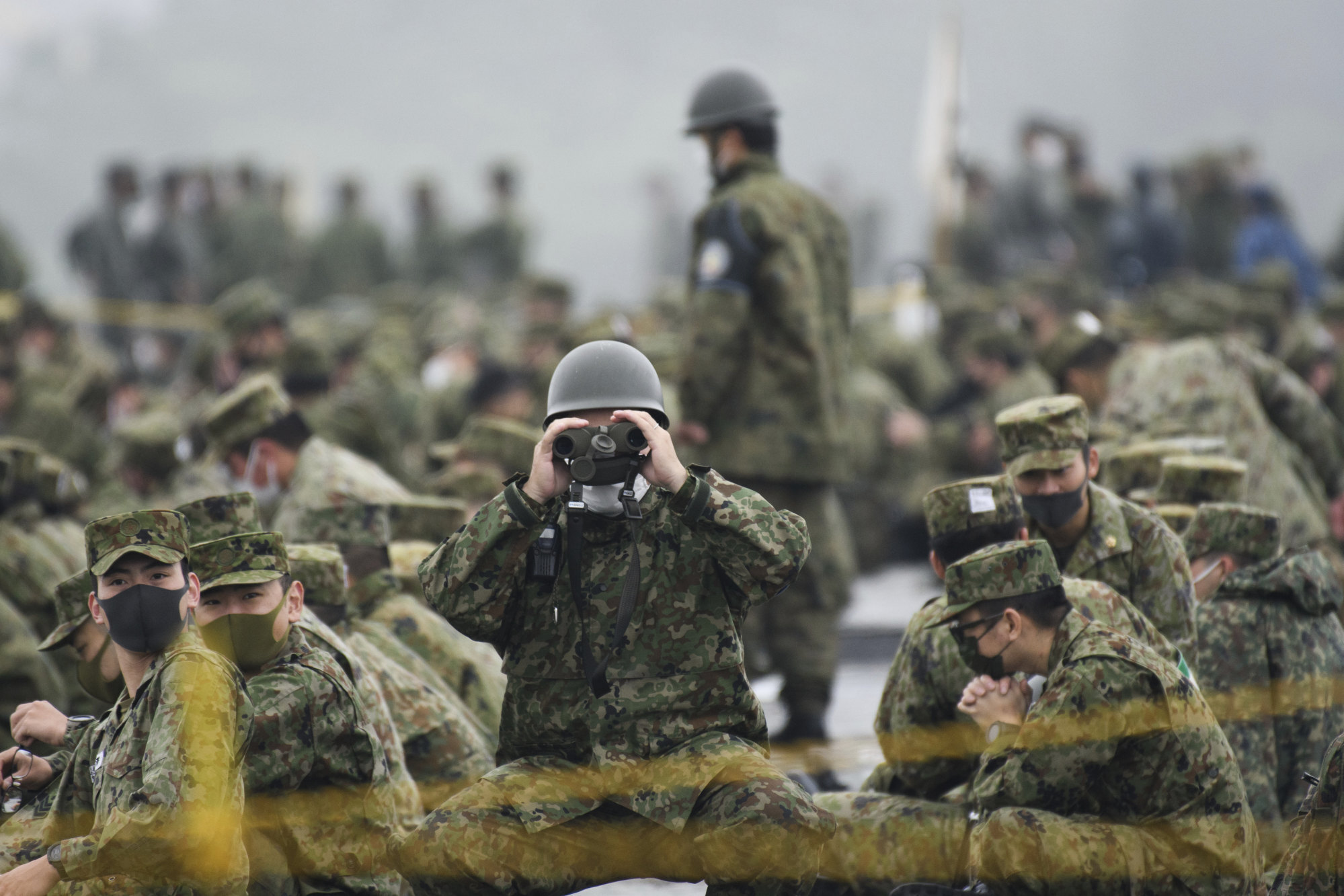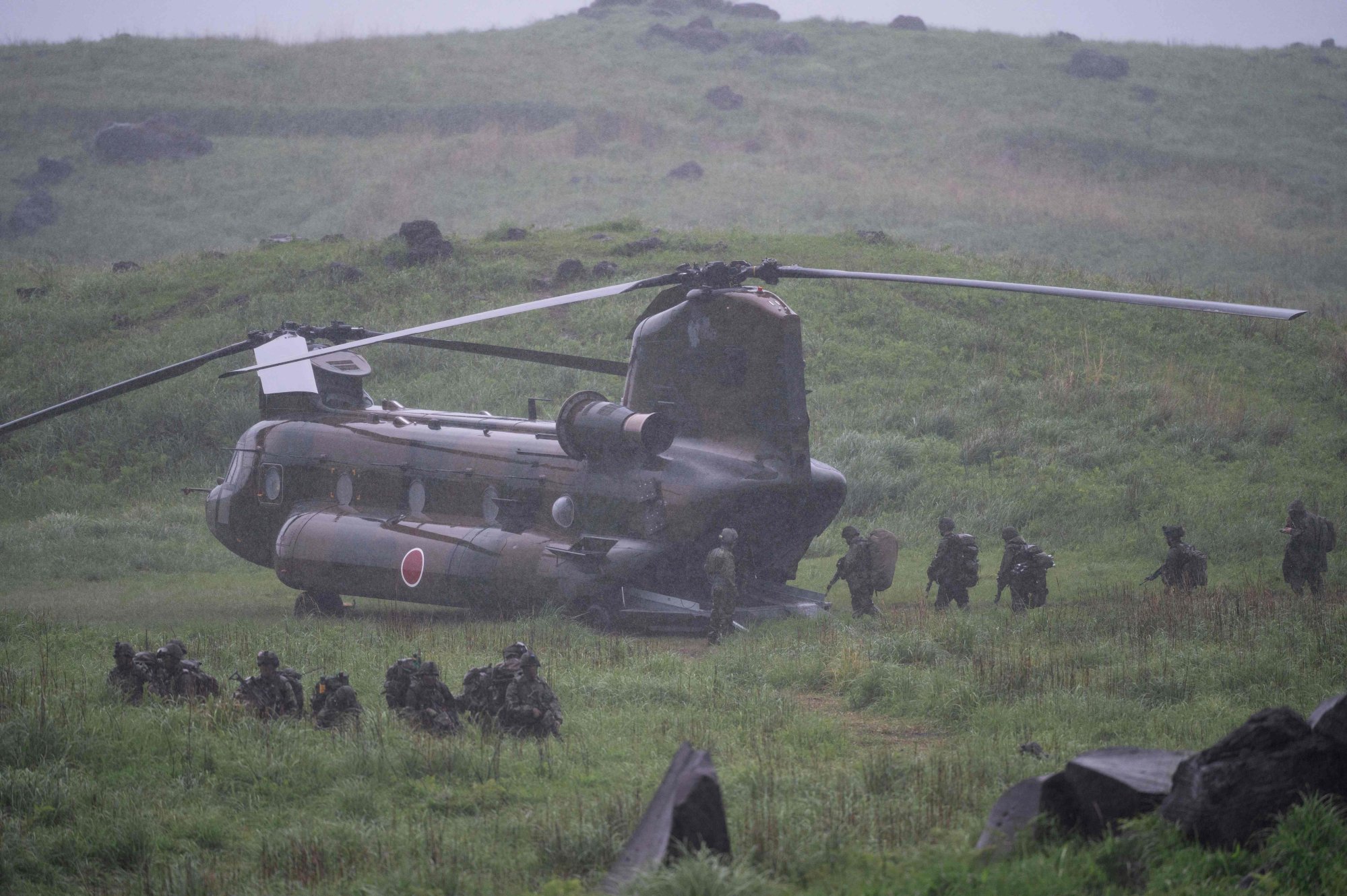
Kishida puts military strike option on table for Japan, in ‘show of standing up to China’
- Japanese leader signals ‘fundamental’ changes to defence strategy – and possibly the constitution – including the ability to attack military facilities overseas
- Speech to the Diet comes amid reports that Tokyo and Washington have agreed that Japan will pay more to host US military bases and personnel from 2022
Laying out his priorities at the outset of an extraordinary session of the Diet, Kishida promised to revise the key components of national security, laid out in the National Security Strategy, the National Defence Programme Guidelines and the Medium-term Defence Programme, within the next 12 months.
The prime minister also used his address to suggest that parliament had “a responsibility to seriously consider” whether the constitution should also be revised, with changes to the most fundamental elements of national law potentially giving Tokyo more leeway in the deployment of its armed forces.
The extra spending lifted Japan’s total defence budget above 6 trillion yen for the first time and set an annual record for a seventh consecutive year. Significantly, it also took defence spending above the threshold of 1 per cent of GDP, while Kishida has indicated that he is planning to increase that to 2 per cent of GDP.

“In order to safeguard the people’s lives and livelihoods, we will examine all the options, including the capability to attack enemy bases … and fundamentally strengthen our defence posture with a sense of speed,” Kishida said.
And while developing the ability to attack sites in foreign countries that Japan believes pose a threat to its security would mark a shift in policy, analysts in Japan emphasised that Kishida was largely following in his predecessors’ footsteps.
It comes after some very aggressive words and moves by China in recent years
“It comes after some very aggressive words and moves by China in recent years and I think that while Kishida is at heart still a dove on security matters involving Japan, I also think he knows that he faces many challenges from Beijing,” he said.
The prime minister made no specific mention of the new weapons or capabilities that Japan intended to develop or purchase to give it the ability to attack foreign bases, although work is under way to retrofit the Maritime Self-Defence Force’s Izumo and the Kaga – both officially designated as helicopter destroyers – into aircraft carriers capable of deploying the vertical take-off and landing variant of the F-35 fighter.
The MSDF will eventually be able to call on 42 F-35B variants of the Lockheed Martin Lightning aircraft.

Ito said, however, that most of the other purchases Japan was planning were primarily defensive in nature. These included integrated air missile defence systems, such as the Patriot Advanced Capability 3 system and the KBSAM surface-to-air missile, designed to protect Japanese airbases from inbound missiles.
Other purchases detailed in the latest defence budget include more maritime patrol aircraft, multirole helicopters, sea mines and advanced torpedoes. Some 4.1 billion yen will go towards the establishment of a new military base on Ishigaki island, which is in Okinawa prefecture and is the closest island to the Senkaku Islands, which China claims as its sovereign territory and refers to as the Diaoyu archipelago.
Just 170km from the disputed islands, the base will be equipped with surface to air and anti-shipping missiles, along with 570 troops. The facility is due to be operational in 2022.
Pacifist Japan is arming itself to the teeth, with China in its sights
A ‘show of standing up to China’
That assumption may be supported by reports that Tokyo and Washington have reached an agreement on Japan paying more to host US military bases and personnel in its territory from 2022. Quoting diplomatic sources, Kyodo News has reported that talks have been under way since late November on the amount that Tokyo will provide to support US forces on its territory and that a final agreement should be reached this month.

Japan appears to have concluded that increasing the amount it pays is inevitable in light of the need to keep the US on side as an ally at a time of rising tensions in the region.
The current annual figure stands at 201.7 billion yen (US$1.79 billion) and while Tokyo had hoped to limit any increase, the government does accept that the bill for defending the nation is rising.
“The overall increase in defence spending under Kishida does not really come as a surprise, it is more of a continuation of Abe’s gradual increases,” said Garren Mulloy, a professor of international relations who specialises in security issues at Daito Bunka University, in Saitama prefecture.
“And Kishida is not regarded as being among the hard right of his party, but I also believe that the centre of the Liberal Democratic Party has realised that, with the rise of China and other deepening security challenges, increasing defence spending is just inevitable,” he said.

